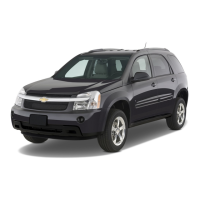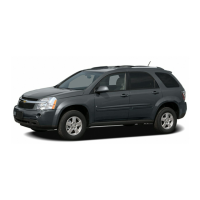
Do you have a question about the Chevrolet El Camino 1983 and is the answer not in the manual?
| Brand | Chevrolet |
|---|---|
| Model | El Camino 1983 |
| Category | Automobile |
| Language | English |
Checklist for ensuring vehicle readiness and safety before operation.
Warning about the dangers of carbon monoxide and how to prevent exposure.
Information on the correct type of gasoline and octane rating for optimal performance.
Specific instructions and notices for diesel engine maintenance and operation.
Operation of the turn signal lever, including headlights, wipers, and cruise control functions.
Step-by-step instructions for starting the gasoline engine under various conditions.
Recommended procedures for starting the diesel engine, including cold weather considerations.
Information on transmission operation, including descending grades and slippery surfaces.
How to engage, change speed, and disengage the cruise control system.
Details on the regular braking system, power brakes, and self-adjusting features.
Instructions for setting and releasing the parking brake, including torque lock.
Overview of instrument panel layout and controls for driver information.
Explanation of engine coolant, oil pressure, and other critical warning lights and gauges.
Fuel, speed, odometer, tachometer, and indicator lights for various vehicle functions.
Information on the 'Check Engine' light and when service may be required.
Purpose and behavior of the brake system warning light.
Monitors engine coolant temperature, warning of overheating.
Controls for temperature, air flow direction, and air conditioning system.
Procedures and advice for handling emergency situations.
Methods for starting a vehicle with a discharged battery using another vehicle.
Detailed steps for safely jump-starting a vehicle's engine.
Diagram and instructions for correctly connecting jumper cables.
Steps to take if the engine overheats, including safety precautions.
Safety precautions and instructions for safely lifting the vehicle.
Detailed steps for changing a vehicle wheel using a jack.
Proper techniques and cleaners for cleaning the vehicle's interior trim.
Guidelines for servicing and maintaining the vehicle for optimal performance.
Guidelines for selecting and changing engine oil and filters for gasoline engines.
Procedure for checking and maintaining the correct engine oil level.
Guidelines for selecting and changing engine oil and filters for diesel engines.
Procedure for checking and maintaining the correct engine oil level for diesel engines.
Information and recommendations for automatic transmission fluid.
Specifies the correct type of fluid for automatic transmissions.
Procedure for checking the automatic transmission fluid level.
System description, coolant type, and maintenance for the engine cooling system.
Step-by-step instructions for flushing and refilling the engine cooling system.
Recommended intervals and procedures for servicing the cooling system.
Information to reduce the risk of loss of vehicle control and personal injury related to tires.
How tire performance is affected by vehicle loading and recommended inflation.
Cold inflation pressures for optimal fuel economy, tire life, and handling.
Chart showing tire load ranges and maximum cold inflation pressures.
How wheel alignment and balance affect tire wear and vehicle handling.
Factors affecting traction and tips to reduce the chance of traction loss.
When and how to replace damaged or worn wheels.
Steps to follow for resolving issues with the dealer or Chevrolet.
Technical specifications for the vehicle, including dimensions and capacities.
Information on the vehicle's fuse system and circuit breakers for electrical protection.
How to locate and identify the Vehicle Identification Number (VIN).
How to identify the vehicle's engine type using the VIN and engine code.
Information on the correct type of gasoline and octane rating for optimal performance.
Information on the correct type of diesel fuel and winterized blends.
Importance of maintaining proper engine oil level and checking the dipstick.
Checking tire inflation pressures regularly for safety and performance.











